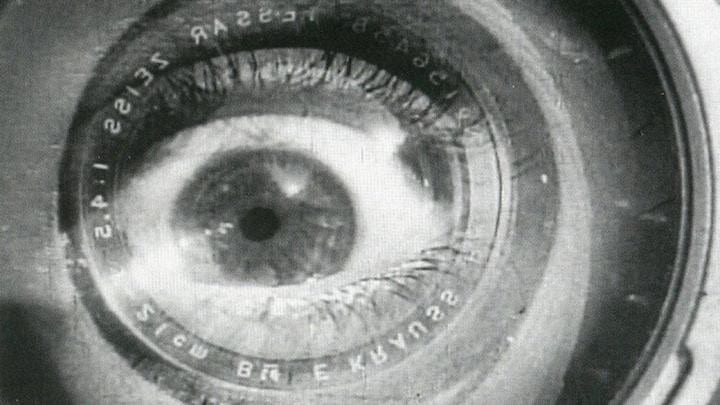Nonfics is now a newsletter! Please support documentary criticism by subscribing here: nonfics.substack.com.
Last week, the September issue of Sight & Sound magazine was released, and with it came the results of the British Film Institute’s publication’s inaugural critics and filmmakers polls of the best documentaries of all time. I’m among the more than two-hundred people who were invited to vote in the critics’ section, which also compiled the selections of curators and programmers and academics. We each submitted ten titles in no particular order. The outcome is a list of 56 nonfiction films ranked by number of mentions. Below are the top ten, which were immediately criticized for being collectively too old.
The Best Documentaries of All Time According to Critics and Programmers
1. Man With a Movie Camera (Dziga Vertov, 1929)
2. Shoah (Claude Lanzmann, 1985)
3. Sans Soleil (Chris Marker, 1983)
4. Night and Fog (Alain Resnais, 1955)
5. The Thin Blue Line (Errol Morris, 1988)
6. Chronicle of a Summer (Jean Rouch and Edgar Morin, 1961)
7. Nanook of the North (Robert Flaherty, 1922)
8. The Gleaners and I (Agnes Varda, 2000)
9. (tie) Don’t Look Back (D.A. Pennebaker, 1967)
Grey Gardens (Albert Maysles, David Maysles, Ellen Hovde, and Muffie Meyer, 1975)
It is a huge honor that I got to take part and represent this site alongside esteemed colleagues who’ve been around a lot longer than I — as well as a professor who taught me documentary history in grad school. And it was a great stress for me to participate, more so than I expected. Documentary cinema is such a broadly encompassing monster with a far more extensive and varied mix of genres than fiction film. It’s more difficult to choose the greatest of something where so many examples are incomparable to one another. Many of the top 10 above hardly seem like they’re of the same cloth. Below are the ten films I submitted to the poll, in chronological order,
The Best Documentaries of All Time According to Christopher Campbell
Man With a Movie Camera (Dziga Vertov, 1929)
Rain (Joris Ivens and Mannus Franken, 1929)
Night and Fog (Alain Resnais, 1955)
Lonely Boy (Wolf Koenig and Roman Kroitor, 1962)
Welfare (Frederick Wiseman, 1975)
Harlan County U.S.A. (Barbara Kopple, 1976)
Sherman’s March (Ross McElwee, 1985)
The Thin Blue Line (Errol Morris, 1988)
Aileen: Life and Death of a Serial Killer (Nick Broomfield, 2003)
Man on Wire (James Marsh, 2008)
Brief explanations of why these were picked should accompany the titles when my list is posted on Sight & Sound’s website on August 14th (now available in a neat interactive graphic; see the excerpt with my explanations down below). That said, I’ve probably wanted to change up my choices constantly since submitting and will continue to question them. The list above was even redone over and over in the final hours before the deadline. Some films that had been on there include The Battle of Chile, Hoop Dreams, and Don’t Look Back. I kept alternating between Kopple’s Harlan County U.S.A. and American Dream, which I tend to watch more.
As always, I have to point out that my consideration of what is the best is hardly what I like the best. My favorite docs include Grey Gardens and Gimme Shelter, yet I think Salesman is the Maysles Brothers’ best. Speaking of which, that was another that keeps popping in and out of my best-of list. It’s probably bad that I don’t have anything by the Maysles or by Pennebaker or Herzog or Blank or so many others. As for Rouch and Marker, I’ve never properly appreciated them anyway. I also, while a fan of The Gleaners & I, don’t know why it’s recognized so high here. And I still haven’t seen all of Shoah, so I can’t justly include it.
Many of my favorites are definitely great docs, and they probably fall just below the ones selected. In addition to the Maysles trio, there’s Koyaanisqatsi, The War Room, Roger & Me, and Vertov’s Kino Eye, which I like slightly more than Man With a Movie Camera. Wiseman would probably fill up a good portion, although while I accept the importance of Titicut Follies, I don’t like it and don’t think it’s his greatest. Meanwhile, Broomfield’s Aileen Wuornos: The Selling of a Serial Killer would have to be included as almost an inseparable partner to the sequel I picked for my list.
The results of the polls are pretty interesting, sort of embarrassingly funny in ways. The critics poll shows signs that we 200 or so aren’t in agreement about what constitutes a great doc, let alone the best. There are many that are popular favorites that I don’t see as having the utmost quality compared to what else is out there. Then there are the historically significant picks, which are deemed great just because they’re notable. Nanook of the North is a delight but not one of the best. Workers Leaving the Lumiere Factory is just important in context of film history. Otherwise what’s special about it?
Filmmakers show a much greater consistency, in their poll results, for great examples of technique, storytelling, and cinematic nonfiction. Most notable are the films that are not only exclusive to their list but high up, such as Man of Aran, Belovy, Burden of Dreams, and Koyaanisqatsi. Below are their top ten.
The Best Documentaries of All Time According to Filmmakers
1. Man With a Movie Camera (Dziga Vertov, 1929)
2. Sans Soleil (Chris Marker, 1983)
3. The Thin Blue Line (Errol Morris, 1988)
4. (tie) Shoah (Claude Lanzmann, 1985)
Night and Fog (Alain Resnais, 1955)
6. (tie) Salesman (Albert Maysles, David Maysles and Charlotte Zwerin, 1968)
Titicut Follies (Frederick Wiseman, 1967)
8. (tie) Don’t Look Back (D.A. Pennebaker, 1967)
Man of Aran (Robert Flaherty, 1934)
Nanook of the North (Robert Flaherty, 1922)
My favorite individual filmmaker list that I’ve seen is Lucy Walker’s. I don’t know if she’s the only person to do this, but she submitted two of her own features — Waste Land and The Crash Reel. It’s a bold move but not without reason. Every director (every artist) should aim to make the best and should hopefully feel they’ve achieved it, too. You can see her ballot along with some other filmmakers and critics in the print edition of the magazine or wait until they show up along with mine and the rest next week.
Documentary is such a complicated medium, with such a variety of forms and genres, that it’s a really daunting task to define it (let alone pick its ten best representatives). And what I think constitutes a great documentary changes constantly. Right now I’m going with the idea that it should depict life while being true to its purpose to construct that depiction as much as present it. Not that it always need be blatantly reflexive, but it shouldn’t pretend it’s anything but a movie. It should also challenge the way we think, see and feel. If it goes against these ideas brilliantly, though, that’s even better. The additional challenge that goes in to contemplating what documentary is and being reminded of the question with each great documentary that comes along, that’s a huge part of why I love the form so much.
Why I Voted for:
- Man with a Movie Camera (1929)
by Dziga Vertov
A lot of documentaries are reflexively about their own making, yet none so much as this film that playfully reminds us how far nonfiction cinema manipulates reality. More docs could use the occasional reverse-motion shot. - Rain (1929)
by Joris Ivens
This other city symphony film from the same year is more about the natural world. Or is it? The filmmakers contain nature by faking a portrayal of a single day, while at the same they were always at the mercy of the weather in order to capture the material to begin with. That’s documentary in a nutshell to me. - Night and Fog (1955)
by Alain Resnais
Words and pictures. The power of narration has never been stronger than in this Holocaust doc that is brief on screen yet lasting in its haunting images and commentary. How to truly capture the reality of what went on at the concentration camps? Imagination isn’t just for literature. - The Lonely Boy (1962)
by Roman Kroitor
Direct cinema is great for capturing candid moments, but this film also has a subject, Paul Anka, who is remarkably upfront about his life as a teen idol and what it took to get him there. Documentaries are a two-edged pen when it comes to telling a story, because the form is still always only as good as the content. Here we have a perfect match. - Welfare (1975)
by Frederick Wiseman
A movie of humans in a most dehumanising place. Wiseman brings us into a welfare office to observe real, honest to goodness people working with and working for a system — and in some cases seemingly working the system. It’s a really claustrophobic documentary but also surprisingly engrossing. - Harlan County U.S.A. (1976)
by Barbara Kopple
A grand issue, a small community, events unfolding in front of the camera. What more can you want from a documentary? How about a musical motif that really punctuates the cultural portrait and overall a film that is totally invested, immersed, embedded into the story? - Sherman’s March A Meditation on the Possibility of Romantic Love in the South during an Era of Nuclear Weapons Prolifer (1985)
by Ross Mcelwee
McElwee can do personal documentary in a way that doesn’t feel self-indulgent. Even though this is a film about him making a film while also trying to find a mate, it’s always about more than him. So many today try to do what Sherman’s March does and few seem to get what makes it so magical. Besides Charleen Swansea, that is. It’s wonderful. - The Thin Blue Line (1989)
by Errol Morris
In theory, it’s unnecessary to so literally point out the uncertainty of ‘truth’ as viewed from different perspectives. We should be looking at all documentaries with consideration of the other sides and points of view. Morris’s execution of the concept here, however, is exquisite. He doesn’t leave much up to the imagination but makes it up to us with sensational ‘reenactments’, maybe the most constructive use of the device ever. - Aileen Life and Death of a Serial Killer (2003)
by Nick Broomfield and Joan Churchill
The most intense depiction of the complicated relationship between documentary filmmaker and subject of all time. - Man on Wire (2007)
by James Marsh
There is little that is ‘caught’ in this documentary: it’s a pristine example of the modern nonfiction film that is pre-planned and structured and all about telling a concise and entertaining story. For its kind, in its culmination of and dependence on dramatisation and talking-head narration and vérité home movie as archive, it’s what everything before it has been leading to.

